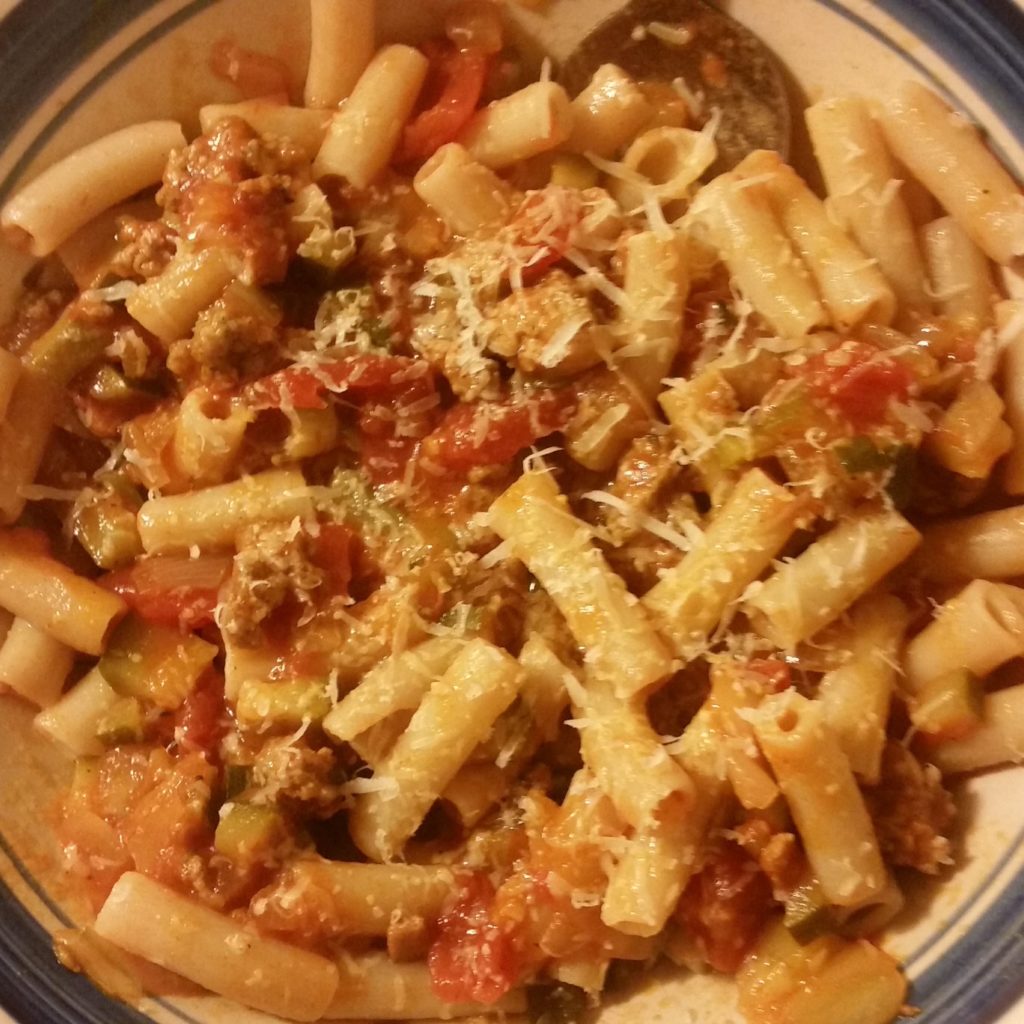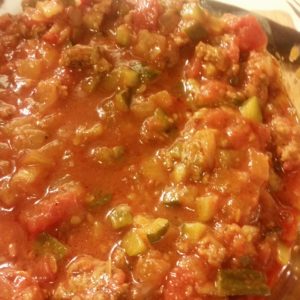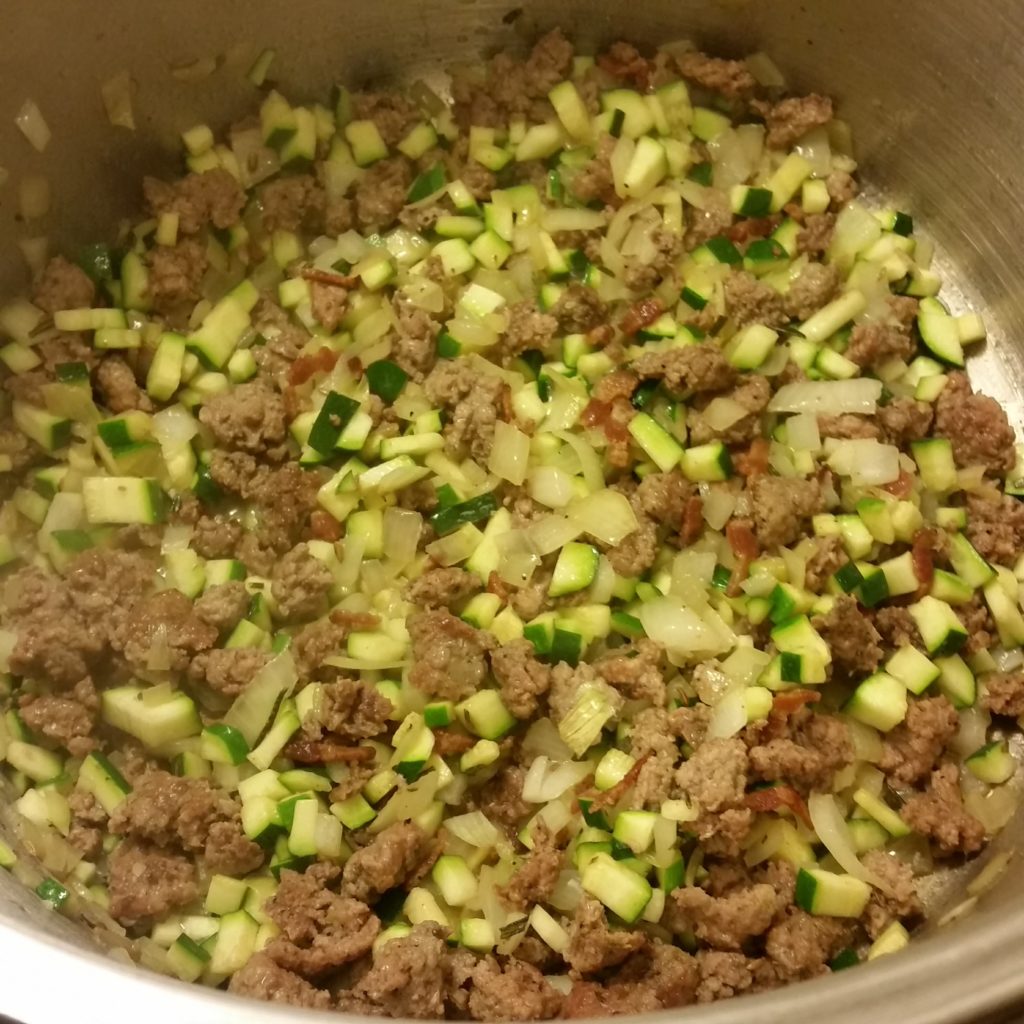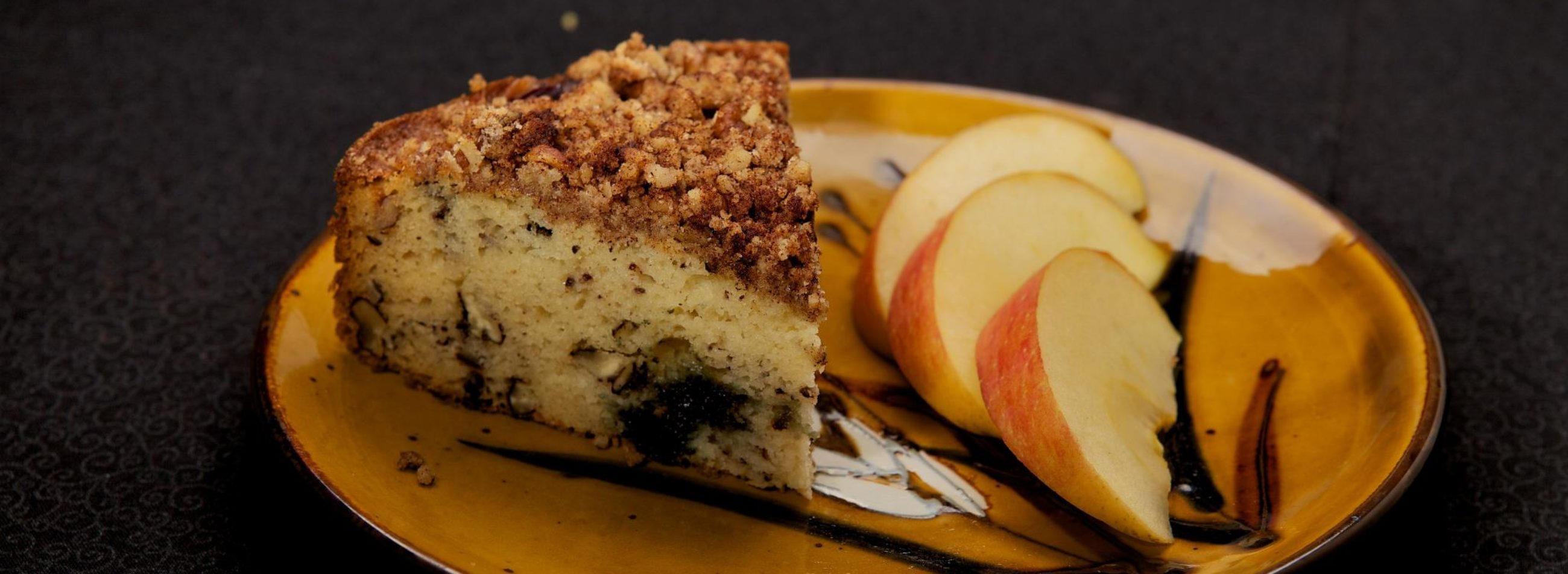 This ragu style pasta sauce has become one of my go-to recipes. It’s an adaptation of a recipe I learned from Jamie Oliver and it requires mostly ingredients that I already have on hand around the house, the prep is super quick, and while the sauce is slowly simmering, you can sit back and relax.
This ragu style pasta sauce has become one of my go-to recipes. It’s an adaptation of a recipe I learned from Jamie Oliver and it requires mostly ingredients that I already have on hand around the house, the prep is super quick, and while the sauce is slowly simmering, you can sit back and relax.
Ragu sauce refers to a sauce made of many tiny little pieces of meat and vegetables. This recipe includes Italian sausage, bacon, onions, and zucchini, but you can add as many finely chopped or grated vegetables as you want. The technique involved in making this sauce makes it easy to add extra veggies while all you’ll taste is rich smoky tomato goodness.
This sauce reheats well and freezes well. I highly recommend making a large batch, approximately double this recipe, and freezing it.
To freeze your sauce, get some large ziplock bags. You’ll want the nice ones because you don’t want your sauce leaking out the top due to a finicky seal. Fill the bag about halfway with pasta sauce, squeeze the air out of the top as best you can, seal the top, and then flatten the bag out until you have an even, flat square of pasta sauce in a bag. Freeze it laid out flat, and once it’s solid, you can store it upright. Freezing it this way means that it solidifies faster, it’s easy to store, and it thaws more quickly.
Now, on to the recipe!

Ragu-Style Pasta Sauce
Ingredients
- olive oil
- 2 big sprigs fresh rosemary
- 1/4 lb bacon
- 1 lb ground hamburger or Italian sausage
- 1 onion
- 2 large zucchini
- 2 heaped tbsp tomato paste
- 1 28- oz can diced tomatoes
- 1 14- oz can crushed tomatoes
- 28 oz water
- Salt and pepper
- Pasta
Instructions
-
Turn the heat up to medium-high beneath a large pot and once it’s hot, add olive oil. Chop rosemary and bacon into small bits and add it to the pot. Fry until bacon is beginning to turn crispy.
-
Break up the sausage meat into small pieces and add to pan. Break into smaller pieces as it browns. This will take some effort. Hamburger will break down easily, but I like the flavor of Italian sausage meat better and it likes to stay in larger clumps. Fry the meat until lightly golden and the sizzling noises in the pan have increased again, approximately 10 minutes.
-
Chop onion and zucchini very small. Add to the pot and fry for approximately 10 minutes.
-
Add tomato paste, diced tomatoes, crushed tomatoes, and water. Season with salt and pepper.
-
Simmer for 30-45 minutes until reduced to a thick sauce.
-
Bring a medium pot of water to a boil and salt the water. Cook your pasta according to the directions. With a slotted spoon, lift the pasta directly out of the water into a bowl, or drain the pasta but save some of the water it was cooked in.
-
Add your finished sauce to your bowl of pasta and add a splash of pasta water. Mix well. The starch in the pasta water helps the pasta and the sauce bind together and the sauce will become smooth and evenly distributed. Finish with a sprinkle of freshly grated parmesan cheese.
TIP: Tomato paste in a little can is super cheap so it makes sense to grab that off the grocery shelf when tomato paste is needed. But if you’re like me, every time you buy it, you only use a few tablespoons, can’t be bothered to transfer the contents to a Tupperware, and the rest goes bad in the can. It’s actually worth it to spend the extra money for tomato paste in a glass jar or a squeeze tube. Some brands to look for: Bionaturae makes tomato paste in a jar and Amore, Cento, San Marzano, and Alessi all make squeeze tubes that close with a cap.
Some easy variations for this recipe:
- Use half hamburger and half Italian sauce, or half hamburger and half ground pork sausage.
- Replace half the meat with cooked lentils to cut down on cost.
- Use a food processor to shred your onion and zucchini or additional veggies like carrots and cabbage to bulk out the sauce and sneak vegetables into your kids’ meal.

Gluten-Free Pasta
Because I specialize in gluten-free recipes I need to discuss the art of making gluten-free pasta and a few pasta brands. Gluten-free pasta has a reputation for being flavorless, mushy, and easily disintegrated into many little pieces.
For tasty, non-mushy gluten-free pasta, follow these rules:
- Stir regularly while the pasta is cooking, especially in the first couple minutes as the pasta is just beginning to soften.
- Never overcook gluten-free pasta. Err on the side of undercooking it so you get nice chewy al dente pasta.
- Once it has finished cooking, make sure to rinse the pasta in very hot water to keep it from sticking together and becoming one big pasta monster clump.
By far the best gluten-free pasta brand available is Tinkyada. They make dozens of pasta shapes, including Lasagna, fettuccine, and large shells for stuffing. They taste pretty much like normal pasta! Tinkyada doesn’t always reheat well and isn’t that great cold, so stick to making the pasta fresh when you need it like the Italians do. Tinkyada is so good I basically never reach for any other brand.
Other brands that carry gluten-free pasta that you might see are Jovial, Bionaturae, Barilla, and Ancient Harvest. I have not tried gluten-free pasta by Jovial but I’ve heard they are great and made from organic whole grain rice, which is pretty refreshing in contrast to so many gluten-free products that have very little nutritional value. I also have not tried Barilla’s gluten-free pasta, but they’re rated highly and they’re widely available in a pretty large variety of shapes. Bionaturae is just okay as it’s closer to what you would expect gluten-free pasta to taste like. I’d avoid Ancient Harvest if you can help it. The taste of the pasta overpowers whatever sauce you put on it, and not in a good way.

I hope you enjoy this ragu style pasta sauce and mini gluten-free pasta guide and that this recipe will become a staple in your household in the future.



